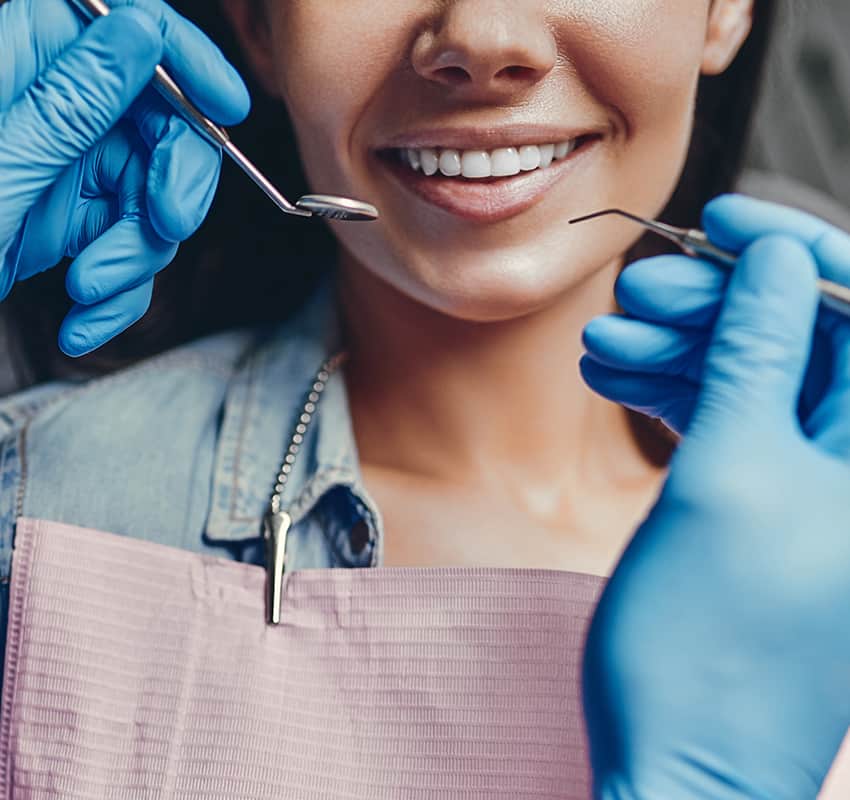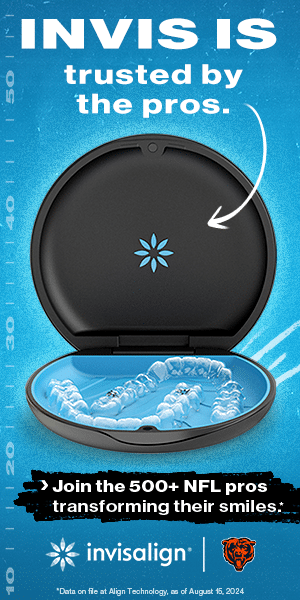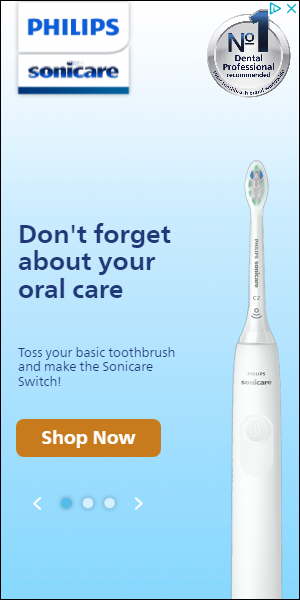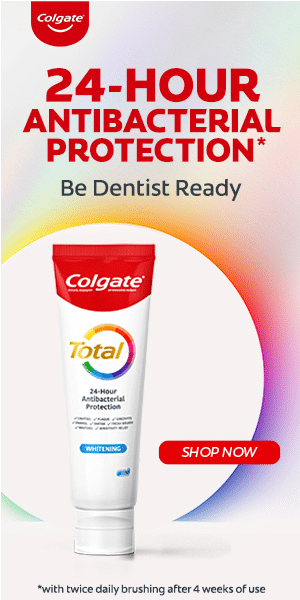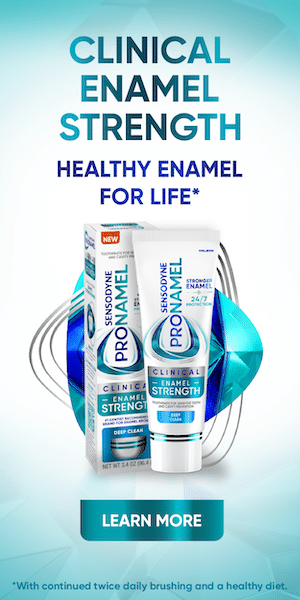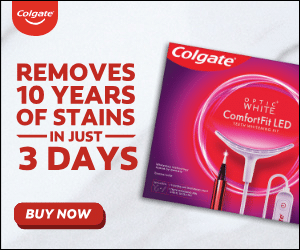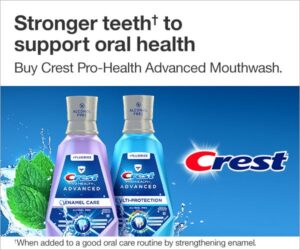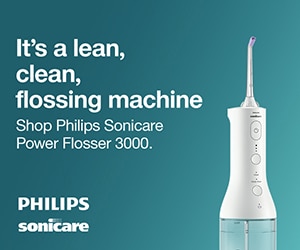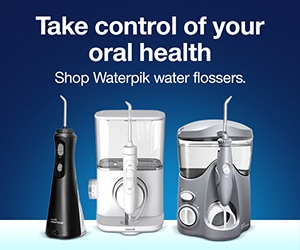Dental Advertising: Strategies, Audiences & Media Tactics
Dental advertising refers to paid media campaigns promoting dental services, dental practice, oral care products, or treatment solutions to health conscious consumers. From driving clinic appointments to boosting product sales via retailers or direct to consumer channels, dental advertising plays a vital role in how brands and businesses within the oral health space build awareness, influence buying decisions, and drive conversions.
This category covers a wide spectrum, from general dental practices and dental cosmetic practices to clear aligner brands, toothbrush manufacturers, and dental insurers. While each advertiser type has a unique approach, what unites them is the need to engage specific consumer segments with targeted messaging, often tied to life stage, health needs, or aesthetic goals.
Campaigns are typically managed by brand marketing teams, digital specialists, or media agencies working across programmatic, performance, or content driven strategies. Whether the goal is to increase share of shelf in retail, build long term brand equity, or generate qualified appointment bookings, precision targeting and contextually aligned placements are critical to success in this space.
With an increasing number of consumers actively researching oral care solutions online across parenting sites, wellness blogs, ecommerce platforms, and health content hubs, the opportunity to reach them at moments of high relevance has never been greater.
What is Dental Advertising?
Dental advertising is a subset of health and wellness advertising that specifically promotes dental related products and services through paid media. It includes a wide range of campaign types, from traditional brand awareness initiatives to highly measurable direct response efforts.
At its core, dental advertising is about connecting the right audience with the right message at the right time, whether that means promoting teeth whitening products to appearance conscious adults, toothbrushes to young families, or local clinics to patients searching for a new dentist.
What sets dental advertising apart is the need for audience specificity and contextual relevance. Unlike broader wellness or fitness campaigns, dental buying cycles can be infrequent and highly intent driven. As a result, successful campaigns rely on signals like health interests, behavioural triggers, purchase history, and even geographic data to drive effectiveness.
Common media formats used in dental advertising include:
- Display advertising for product visibility and awareness
- Video advertising for storytelling and education
- Native advertising for in context engagement and trust building
- Connected TV (CTV) for large format, non skippable awareness campaigns
For marketers and media buyers working with dental brands, understanding the nuances of this category and how different types of advertisers approach it is key to developing impactful, results driven strategies.
Your Dental Website: The Foundation Before Advertising
Before launching and investing in any dental advertising campaign, it’s critical to ensure your dental website is set up to capture and convert the traffic your ads will generate. Whether you’re running brand awareness, eCommerce, or appointment-driven campaigns, your website acts as the central destination — and it needs to be ready to perform.
Here’s what to have in place before turning on your dental advertising:
1. Mobile-Optimised and User-Friendly Design
Your website should be fast-loading, responsive on all devices, and simple to navigate. Make it easy for visitors to understand your services, find essential info, and take the next step — whether that’s booking an appointment or adding a product to cart.
2. Clear Calls-to-Action (CTAs)
Every page should guide users toward a conversion — “Book Now,” “Request a Consultation,” or “Shop Oral Care Products.” Avoid vague or passive buttons. CTAs should be visible, action-oriented, and supported by trust signals (e.g. reviews, testimonials, affiliations).
3. Content That Builds Trust and Visibility
Include informative blog posts, service pages, FAQs, and treatment explainers to support SEO and help users make informed decisions. For example, topics like “Top 10 Benefits of Professional Teeth Whitening” or “Why Dental Check-Ups Every 6 Months Matter” can draw organic traffic and support paid ad journeys.
4. Appointment Reminders and Lead Follow-Up
Integrate tools to automate appointment reminders via SMS or email. For product-led brands, ensure cart abandonment and lead nurture emails are in place. Your ad dollars work harder when follow-up systems keep the audience engaged.
5. Social Proof and Reviews
Display real reviews and testimonials from happy patients or customers. These reinforce trust and increase conversion rates once users land on your site from paid channels.
Turn Website Traffic into Patient Referrals and New Leads
A well-structured dental website does more than support paid campaigns — it also becomes a valuable asset for generating organic traffic, patient referrals, and inbound interest. When set up correctly, it acts as a 24/7 salesperson for your dental services, converting casual visitors into new leads and driving more enquiries from prospective patients. Whether a visitor finds you through advertising, word of mouth, or a search engine, your website should make it easy for them to understand what you offer, why they should choose you, and how to take action. This digital foundation ensures every channel — paid or organic — works more effectively.
Types of Companies Running Dental Advertising
Dental advertising spans a diverse range of dental businesses, each with its own focus, audience, and marketing objectives. From community-based dental clinics to global oral care brands, advertisers in this space use digital channels to reach consumers across every stage of their oral health journey — from routine check-ups to cosmetic enhancements, and everything in between.
Some companies focus on acquiring new patients through geographically targeted campaigns, while others are more product-led, aiming to boost online and retail sales of dental hygiene products. Many combine brand-building with direct-response performance marketing, especially in highly competitive categories like electric toothbrushes, whitening kits, and clear aligners. The common thread is a strong need to educate, build trust, and influence purchase or booking decisions in a cluttered digital environment.
Each dental business type has unique traits — whether it’s targeting busy families, beauty-conscious millennials, or health-savvy shoppers. Understanding these distinctions is essential for building effective campaigns and reaching the right audience with the right message. The following breakdown explores the most common types of companies actively running dental advertising and the core characteristics that shape their strategies.
1. General Dental Clinics & Family Dental Practices
General dental clinics and family practices provide routine, preventative, and restorative dental care to individuals of all ages. These dental businesses can range from small, single-dentist operations to large, multi-chair practices with a full roster of dental professionals, including general dentists, hygienists, oral health therapists, and support staff. Some operate independently, while others belong to growing dental networks or national corporate groups.
These practices typically offer services such as check-ups, cleans, fluoride treatments, fillings, extractions, X-rays, root canals, and ongoing oral health education. Their patient base is broad and includes young families, working professionals, seniors, and occasionally emergency or walk-in patients. The primary objective is to build long-term relationships with local communities by delivering consistent, trustworthy, and affordable care.
Advertising for general dental practices is most often geographically targeted, focusing on attracting new patients within nearby suburbs or postcodes. Campaigns may promote introductory offers, no-gap check-ups, gap-free dental for kids, or gentle dentistry messaging for anxious patients. Timing is also key — many clinics align promotions with seasonal reminders around six-monthly check-ups or back-to-school dental readiness.
The tone of advertising tends to be professional, community-oriented, and reassuring. Targeting strategies often include household demographics (parents with children, retirees, etc.), interest in health and wellness, or search and behaviour data that indicates intent to switch providers or book a new appointment. Whether independent or part of a larger group, these dental practices rely on advertising to maintain consistent patient flow and brand visibility in increasingly competitive local markets.
Dental Advertising Examples of General Dental Clinics & Family Dental Practices
2. Cosmetic Dental Centres & Smile Studios
Cosmetic dental centres specialise in enhancing the aesthetics of a patient’s smile. Services commonly offered include veneers, teeth whitening, smile makeovers, gum reshaping, and composite bonding. These clinics often target young professionals, adults aged 25–55, and individuals seeking confidence boosts for key life events such as weddings, career changes, or media-facing roles.
Advertising from these businesses is aspirational and visually led, often showcasing dramatic before-and-after images. Campaigns typically target audiences interested in beauty, self-improvement, skincare, and wellness. Geographic targeting is layered with behavioural and lifestyle indicators, aiming to reach image-conscious consumers with disposable income and intent to invest in their appearance.
Dental Advertising Examples of Cosmetic Dental Centres & Smile Studios
3. Clear Aligner & Braces Brands
Clear aligner and braces brands focus on teeth straightening solutions — often with a cosmetic angle. These companies target adults and teens looking for discreet orthodontic treatments, with clear aligners positioned as an alternative to traditional metal braces. The audience typically includes image-conscious adults aged 18–45 and parents researching treatment options for their teens.
Many brands follow a direct-to-consumer (DTC) model, offering at-home impression kits, remote monitoring, and online consultations. Others partner with dental clinics for in-practice fitting and oversight. Advertising tends to be lifestyle-driven, featuring real people and transformation stories. Targeting strategies include interest-based segments around beauty, self-improvement, health, and personal care.
Dental Advertising Examples of Clear Aligner & Braces Brands

4. Electric & Manual Toothbrush Brands
Toothbrush advertisers typically fall into two segments: premium electric toothbrushes and everyday manual options. Electric models are positioned as high-performance health devices, while manual toothbrushes are marketed around affordability, simplicity, and routine hygiene. Both types are common in the oral care category and widely advertised through digital channels.
The audience includes health-conscious adults, tech-oriented users, and parents purchasing for children. Electric toothbrush advertising often targets consumers seeking more effective plaque removal, gum health improvement, or personalised oral care through smart features. Manual toothbrush campaigns focus on accessibility, family value packs, and trusted daily care.
These brands usually employ a mix of brand awareness (highlighting clinical benefits, lifestyle fit, or innovative features) and eCommerce performance marketing, driving traffic to online retailers or direct-to-consumer platforms. Campaigns are timed around replenishment cycles, sales events, or new product launches, and often use audience targeting based on household makeup, personal care interest, or health behaviour.
Dental Advertising Examples of Electric & Manual Toothbrush Brands
5. Toothpaste Brands
Toothpaste brands are among the most established advertisers in the oral care category, spanning a wide spectrum of product types — from whitening and sensitivity relief to natural, charcoal, fluoride-free, and enamel-protecting formulations. These products are marketed both for daily use and for solving specific dental concerns, with audiences ranging from families and children to adults with targeted oral health needs.
Advertising typically includes a mix of brand awareness and eCommerce-focused campaigns, driving product trial, subscription sign-ups, or retail purchase via pharmacies and supermarkets. Messaging often highlights ingredient claims, dentist endorsements, clinical studies, or lifestyle benefits. Toothpaste brands use display, video, and native placements to reach personal care shoppers, parents, and health-conscious consumers at scale.
Dental Advertising Examples of Toothpaste Brands
6. Teeth Whitening Kits & Cosmetic Oral Products
Teeth whitening kits and cosmetic oral care products are heavily marketed toward appearance-focused consumers seeking quick, visible improvements to their smile. These products include whitening strips, gels, LED light systems, pens, and foams. The typical audience ranges from adults aged 18–45, with a strong skew toward females interested in beauty, grooming, and self-confidence.
Advertising in this category is highly visual and often transformation-driven, showcasing before-and-after imagery, lifestyle scenarios, or influencer testimonials. Campaigns tend to be aspirational, emotionally charged, and closely aligned with beauty and personal care cycles — such as wedding prep, holidays, or milestone events.
Marketers in this space often adopt a dual strategy: building brand trust and aspirational appeal while running aggressive eCommerce campaigns that drive direct conversions. Targeting is typically interest-based (beauty, skincare, self-care), demographic (age, gender), and behavioural (recent beauty product purchases or cosmetic treatment intent). These campaigns often run across high-visibility digital channels where visual storytelling and social proof are most effective.
Dental Advertising Examples of Teeth Whitening Kits & Cosmetic Oral Products
7. Floss, Interdental Brushes & Dental Tools
Floss, interdental brushes, and other dental hygiene tools are advertised as essential additions to daily oral care routines. These products are typically marketed toward health-conscious adults, older demographics concerned with gum health, and individuals with specific dental needs such as braces, implants, or sensitive gums.
Unlike cosmetic categories, this space focuses more on practicality, effectiveness, and education. Advertising often highlights dental professional recommendations, ease of use, and clinical benefits like plaque removal or gum disease prevention. Visuals focus on product demonstrations, close-up usage, or educational diagrams explaining technique and benefit.
Targeting strategies include audiences interested in oral health maintenance, preventative care, and routine wellness habits. These products also appeal to consumers already buying toothpaste, mouthwash, or toothbrushes, making cross-category targeting effective. Brands typically combine brand trust-building (e.g. product quality, dental endorsements) with performance marketing that drives sales through pharmacies, supermarkets, and online retailers.
8. Mouthwash & Breath-Freshening Products
Mouthwash and breath care products are marketed as key components of a complete oral hygiene routine. These products appeal to a broad consumer base, including adults concerned with freshness, oral bacteria control, or long-term gum and enamel health. Some formulations are positioned for therapeutic use, while others are lifestyle-driven, promoting confidence and social readiness.
Advertising in this category balances clinical messaging with lifestyle appeal. Campaigns may emphasise anti-bacterial properties, dentist-recommended formulas, alcohol-free variants, or benefits like enamel strengthening and plaque prevention. On the lifestyle side, messaging focuses on confidence, daily rituals, and freshness “on the go.”
The audience is often segmented by health-conscious behaviours, personal care interest, and repeat-purchase intent. There’s also a growing market among consumers seeking natural, gentle, or sensitive-friendly alternatives. Media buying strategies combine brand-building campaigns with retail and DTC performance advertising, often synced with promotional windows at major pharmacy and grocery retailers.
Dental Advertising Examples of Mouthwash & Breath-Freshening Products
9. Children’s Dental Products
Children’s dental products — including toothbrushes, toothpaste, flossers, and rinse — are marketed to parents and caregivers focused on establishing healthy oral care habits early. The key buyers are typically adults aged 25–45, often with young children or school-aged kids. Messaging is centred on safety, gentleness, ease of use, and fun — with many products using colours, characters, or flavours to improve appeal and compliance.
Advertising in this category must speak to both functionality and parent reassurance, often highlighting fluoride-free or low-fluoride options, natural ingredients, and paediatric dentist endorsements. At the same time, branding leans into playful, colourful designs that attract children and encourage regular brushing.
Targeting strategies are driven by household makeup (parents with kids under 12), life stage (new parents, school starters), and behavioural signals (parenting content, kids’ health interest, product research). Media placement often includes family content, parenting blogs, wellness channels, and eCommerce environments. Campaigns combine long-term brand affinity with time-sensitive retail promotions, often synced with back-to-school or dental health awareness periods.
10. Dental Insurance Providers
Dental insurance providers advertise to individuals and families looking for cost-effective access to oral healthcare. Their offerings are typically promoted as part of private health extras, stand-alone dental plans, or employer-provided benefits. Target audiences include adults aged 25–60, families with children, retirees, and young professionals transitioning off parental coverage.
Advertising focuses on value, coverage, and peace of mind — with messaging that highlights benefits like no-gap check-ups, preventative care, and rebates on major dental work. There’s often an emphasis on affordability, network size, and ease of claiming. Many campaigns are timed around seasonal decision points, such as end-of-financial-year, new job starts, or open enrolment periods.
Targeting strategies include life-stage signals, health-conscious behaviours, and financial intent (e.g. budget planning, comparison shopping). Media often includes health and wellness content, financial advice sites, parenting platforms, and comparison tools. Campaigns typically combine brand trust and reassurance messaging with conversion-focused creatives that drive users to get a quote, compare plans, or check eligibility.
11. Pharmacies & Online Retailers Selling Dental Products
Pharmacies and online retailers play a central role in distributing dental and oral care products, and they regularly run advertising to boost sales both in-store and online. Their campaigns often feature a mix of brand-led promotions, multi-buy offers, seasonal deals, and exclusive product launches across categories like toothpaste, mouthwash, toothbrushes, floss, and whitening kits.
The target audience is broad, encompassing value-driven shoppers, health-conscious consumers, and high-frequency buyers of personal care products. Campaigns are designed to drive immediate action, such as adding products to cart, visiting a store, or taking advantage of limited-time discounts. Advertising may also focus on pharmacy loyalty programs, delivery convenience, or subscription services for oral care essentials.
Targeting strategies typically leverage consumer purchase behaviour, basket size, and repeat buying patterns. These advertisers often align campaigns with retail calendars (e.g. back-to-school, spring refresh, EOFY health resets) and use high-visibility placements across shopping, health, wellness, and parenting content to maximise product discovery and sales lift.
12. Oral Care Devices & Dental Tech Products
Oral care device brands include products such as water flossers, oral irrigators, tongue cleaners, and advanced gum care systems. These advertisers position their offerings as high-tech, dentist-recommended solutions that enhance or replace traditional tools like floss or mouthwash. The typical audience includes health-conscious adults, individuals with braces or implants, and tech adopters looking for more effective or convenient dental hygiene routines.
Advertising strategies often focus on clinical outcomes, ease of use, and visual demonstrations of product benefits. Campaigns typically blend brand awareness with strong eCommerce performance goals, using video, native, and retargeting formats to drive education, trust, and conversions. These brands also perform well when contextually aligned with oral health and preventative care content.
Dental Advertising Examples of Oral Care Devices & Dental Tech Products
Media Formats Used in Dental Advertising
Display Advertising for Product Visibility and Awareness
Display advertising is a foundational format in dental campaigns, ideal for building brand visibility across websites, apps, and digital environments. Static banners, responsive units, and rich media creatives allow dental brands to showcase products or promote services in a visually consistent way. This format works well for promoting check-ups, launching new oral care lines, or driving retail traffic during promotional periods. Display ads can be geo-targeted, behaviourally triggered, or contextually aligned with relevant health and wellness content, making them an efficient tool for upper and mid-funnel awareness while still supporting direct traffic to landing pages or booking tools.
Video Advertising for Storytelling and Education
Video advertising offers dental brands a compelling way to connect with audiences through visual storytelling. Whether it’s explaining how a clear aligner works, demonstrating proper flossing technique, or showing real patient transformations, video brings education and emotion together. Short-form video (6–30 seconds) is often used for awareness, while longer-form formats can dive deeper into the benefits or unique features of a service or product. Video can be deployed across in-stream (pre-roll, mid-roll) placements, outstream formats, or social video environments. It is especially powerful for cosmetic dental campaigns, dental device education, or building trust in service-based providers.
Native Advertising for In-Context Engagement and Trust Building
Native advertising integrates branded content within the editorial flow of a website, making it feel like a natural part of the user experience. For dental brands, this format is ideal for education-based marketing — such as articles on oral hygiene tips, treatment overviews, or guides comparing whitening options. Native ads typically achieve higher engagement and dwell time, especially when aligned with health, lifestyle, or parenting content. The format is well suited to mid-funnel objectives like building credibility, answering questions, and warming up audiences for future conversion. It’s also effective for launching new products that require explanation or expert positioning.
Connected TV (CTV) for Large Format, Non Skippable Awareness Campaigns
Connected TV advertising allows dental brands to deliver cinematic, high-impact messaging on streaming platforms and smart TVs. CTV combines the storytelling power of traditional television with the precision targeting of digital. This format is ideal for brand-led campaigns, especially for services like cosmetic dentistry, dental insurance, or oral care devices. Ads are non skippable and placed in premium, brand-safe environments, capturing undivided viewer attention. CTV campaigns can be targeted by demographics, location, household composition, or content type — reaching families, young professionals, or beauty-focused consumers with highly relevant messaging at scale.
Advertising Tactics for Dental Brands
For dental brands looking to maximise the performance of their campaigns, success comes from combining message relevance with precise targeting. Healthy Ads offers powerful tools that go beyond demographics — helping you reach the right person at the right moment with the right message. Below are four proven advertising tactics used by dental brands across our network.
1. Target In-Market Health Audiences
Reaching consumers at the moment they are actively researching or considering dental products and services is key to driving conversion. Through Healthy Ads’ in-market audience targeting, dental brands can engage users based on real-time interest and behavioural intent.
This includes people actively researching topics like:
- Choosing a new dentist or switching providers
- Searching for cosmetic dental procedures
- Exploring whitening options, braces, or clear aligners
- Comparing oral hygiene products online
These users are further down the purchase funnel, making in-market targeting ideal for driving appointment bookings, product trials, or retail conversions.
2. Contextual Targeting Within Relevant Health Content
Contextual targeting ensures your ads appear in the most relevant content environments — at the exact moment a consumer is reading about dental care or oral health. Healthy Ads offers pre-built contextual segments that align with key dental verticals, including:
These segments place your message within trusted health, wellness, parenting, and lifestyle articles, boosting relevance, trust, and click-through performance.
3. Retarget Website Visitors and Non-Converters
Retargeting is essential for reconnecting with high-intent users who previously visited your website but didn’t convert. Whether they explored treatment options, browsed pricing, or added a product to cart, these users are often close to making a decision. With Healthy Ads, you can serve personalised messaging to these audiences across our premium publisher network — helping to recover leads and close the loop with timely reminders, special offers, or additional product benefits.
4. Build Lookalike Audiences to Expand Reach
After identifying your best-performing audiences — such as completed appointments, purchasers, or high-engagement visitors — you can use Healthy Ads’ lookalike modelling to scale efficiently. This tactic helps dental brands find new users who closely match the behaviours and traits of their top converters. It’s particularly effective when expanding into new territories, launching new products, or building on successful retargeting pools to reach net new, high-value audiences.
Bringing It All Together for High-Performance Dental Campaigns
By combining these tactics — in-market audience targeting, contextual alignment, retargeting, and lookalike modelling — dental brands can create a high-performance advertising strategy that balances awareness, engagement, and conversion. Whether the goal is to increase bookings, drive product sales, or grow brand visibility, Healthy Ads provides the tools to reach the right audience at every stage of the decision-making journey. These tactics ensure your campaigns are not only reaching more people, but the right people — delivering better results and a stronger return on investment across all digital touchpoints.


